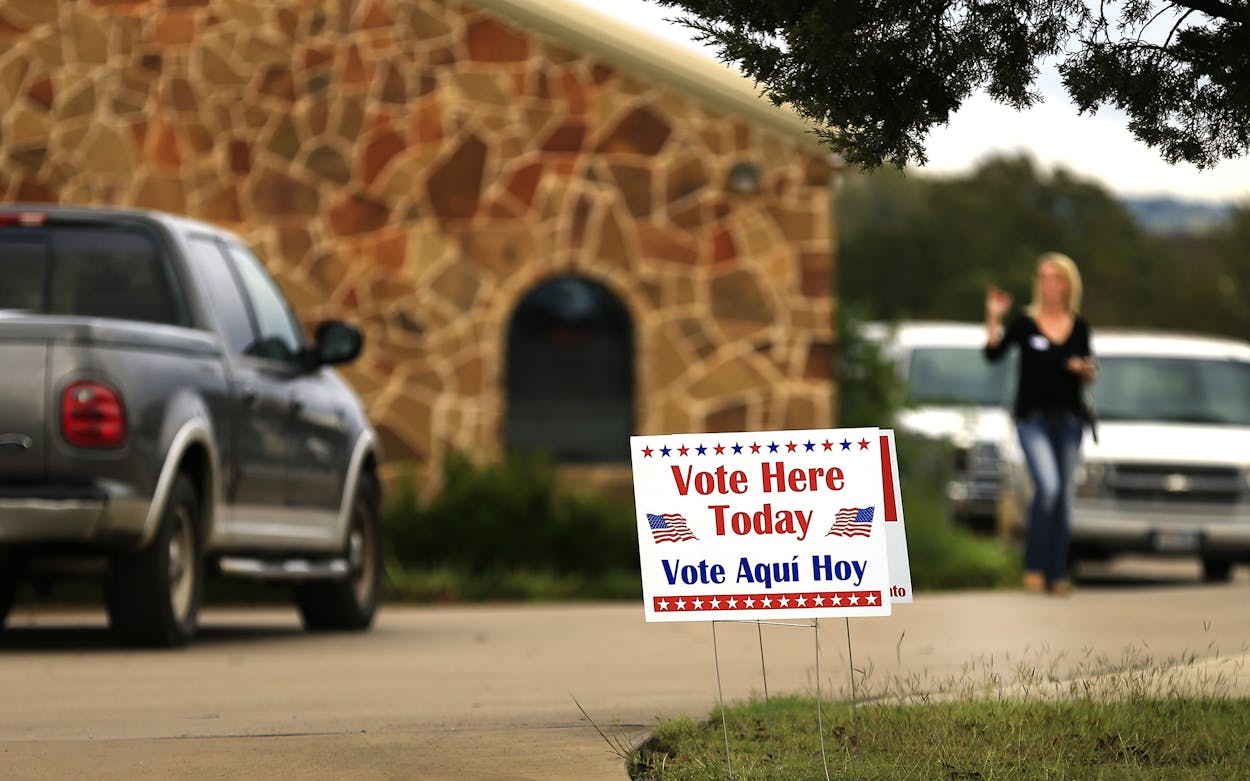One day we have a poll showing Ted Cruz defeating Beto O’Rourke by nine percentage points. Then the next day, we have a new poll showing O’Rourke ahead by two points, but that same survey also shows Cruz ahead by two points, or maybe by just one point depending on how you look at it. How can that be, you ask?
Hang on. The devil is in the details, and the details are pretty geeky.
The first thing to understand is that any political survey is a statistical estimate. There are more than 15 million registered voters in Texas, and most polls put questions to fewer than a thousand of them. The pollsters try to use past election turnout to create a sample that matches the expected electorate. For instance, if 63 percent of the people who voted in the last election were white, then you’d try to have a poll sample approximating that.
Journalists and campaigns tend to read polls as rock solid numbers at a specific point in time about where the race stands. So it’s important to understand dates on which the poll was taken. A Quinnipiac University Poll released Thursday, for example, shows that, of those Texans sampled, 54 percent to 39 percent believe Brett Kavanaugh should be confirmed as a justice to the U.S. Supreme Court. But the poll was taken between September 11 and September 17. On the afternoon of September 16, the Washington Post detailed allegations by a woman, Christine Blasey Ford, that Kavanugh sexually assaulted her when the two were in high school. It’s impossible to know if any of the respondents changed their minds are the allegations surfaced.
What you really want to do is follow the trends of whether a candidate’s numbers are moving up or down. During the summer, the surveys showed Cruz dropping a couple of points and O’Rourke coming up a couple of points. That reflected growing enthusiasm for O’Rourke. But when I averaged their numbers from a variety of surveys last week, I found that O’Rourke was at about the same level of support that Democrat Bill White had in the 2010 governor’s race, and Cruz was at about the same level as former Governor Rick Perry, the Republican. Perry went on to win that contest easily.
A change in polling methodology that you are now seeing is a switch from surveying registered voters to likely voters. In the 2016 elections, 59 percent of the registered voters cast ballots. In the 2014 off-year election, a mere 34 percent of the registered voters bothered. So a survey of registered voters captures the opinion of a lot of people who will never vote.
Both of the surveys this week are from likely voters. So why are they so different?
Partly, because the Quinnipiac University Poll was a telephone survey of 807 likely voters, and the Reuters/Ipsos/University of Virginia Center for Politics Poll survey was done over the internet, winnowing 2,000 respondents down to 1,000 likely voters. The Quinnipiac poll has been around for years and has a good track record, rated an A- survey by FiveThirtyEight.com, an aggregator of polls. The Reuters/Ipsos/University of Virginia Center for Politics Poll is fairly new, having launched in August. Call it my personal bias, but I trust telephone polls more than internet surveys because internet surveys require a greater degree of data manipulation by the pollster.
The Quinnipiac survey had Cruz leading 54 percent to 45 percent. While the Quinnipiac survey was very accurate during the 2016 elections, it was believed to have a Democratic tilt of about 4 percentage points.
The news that went out on the Reuters poll had O’Rourke ahead 47 percent to 45 percent. But the Reuters survey gave O’Rourke that lead with an expected voter turnout of half of the registered voters in Texas. If the turnout dropped to 45 percent of the registered voters, suddenly, Cruz was in the lead 48 percent to 46 percent. The last time voter turnout got that high in a mid-term election was 1994 in the contest between Governor Ann Richards and Republican challenger George W. Bush.
Cruz pollster Chris Wilson, in a Twitter tirade, wrote that the Reuters survey oversampled Democrats. He wrote that there are 27 Republican Texans in the U.S. House and 11 Democrats. The cross tabs show that 40 percent of its sample would vote for a Democrat for Congress, and 34 percent voting for a Republican.
The best way to read polls is to not compare one company or one university’s surveys against those done by another group. Each will have its own methodology. But from survey to survey done by the same organization, watch for movement up or down.
And, as those who are down in the polls say, the only poll that counts is the one taken on election day.
- More About:
- Politics & Policy
- Ted Cruz
- Beto O'Rourke






